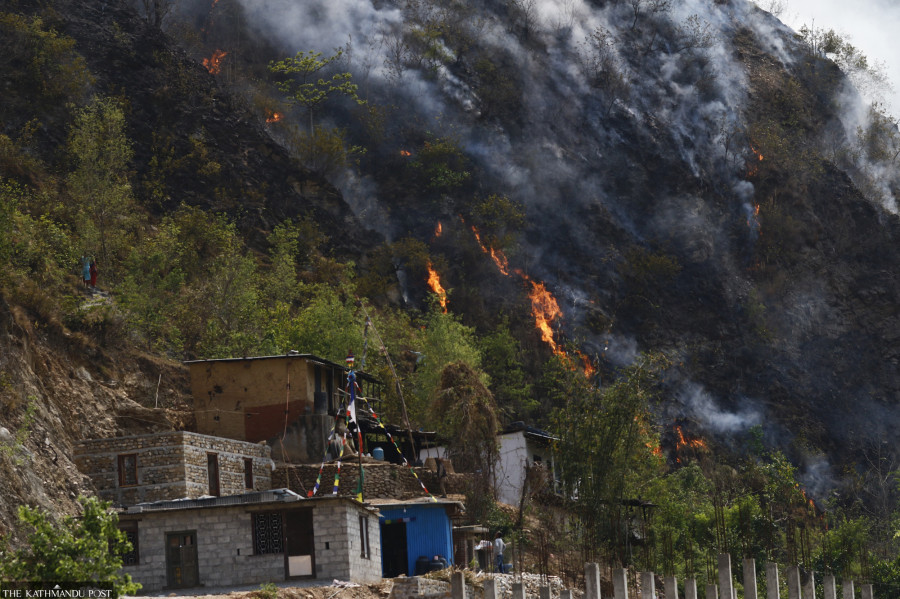Editorial
Putting out the flames
The government must take a multipronged approach, bringing together various stakeholders to make wildfires a rarity.
It’s the season of inferno all over again. Almost everywhere in the country, you see amber and smoke in forests and grasslands. These fires are not “wild” per se, as most of them have been deliberately started by unscrupulous people with little concern for the environment or the society at large. And, as expected, the wildfires have entered villages, turning homes and sheds into ash and killing people and animals alike.
The National Disaster Risk Reduction Portal of the Government of Nepal has said 14 people were killed, 49 injured, and 1,132 families affected in fire incidents in the past month alone. But more than numbers, they represent the high cost of our neglect and lack of preparedness. What is more distressing is that fire incidents are an annual occurrence and we continue to maintain the same lackadaisical attitude we had adopted last year and the years before. Last year, 112 people were killed, 506 injured, and 5,328 families affected in such fire incidents.
History repeats itself tragically each year, killing people and animals and destroying property and environment, and it is as if we are doomed to repeat old mistakes. It’s an age-old general knowledge that the dry season comes with the risk of wildfires. Scientists say it is sometimes possible for wildfires to start on their own, but most of the time, they are mediated by human activity. Coupled with the propensity of the wild to catch fire during drought is the pseudo-scientific notion among the people that burning stubble makes the land more fertile, paving the way for better-quality grass or crops. It is this dangerous mix of the natural and the human factors that makes late spring and early summer a season of fires.
In being reluctant to mend our ways, we are subjecting ourselves to the vicious cycle of death and destruction each year—a travesty of civilisation indeed. The sheer scale of fire this season is rendering responders helpless, as they have neither the human resources nor equipment to deal with the crisis. Therefore, the best way out is to find ways to stop the generation of wildfires in the first place. And for this, the government must begin a massive awareness campaign at the community level against the use of wildfires for generating so-called organic fertiliser.
There are in fact legal provisions in place to punish those who start wildfires. Outside protected areas of forests, the prevailing Forest Act provisions for a fine of Rs 60,000 and or three years of jail, in addition to covering the losses. These are big penalties, yet also meaningless if they cannot be enforced. With years of experience in dousing wildfires—or the lack thereof—the government is well aware of the high-risk zones for wildfires. It should work with local levels to prevent, monitor and respond to wildfires in such localities. Additionally, there should be more investment in firefighting resources. Finally, preventing wildfires is not the prerogative of one ministry or department, as beyond human cost it also imposes social and environmental costs. So what is needed is a multi-dimensional, multi-pronged approach that brings together various stakeholders to make wildfires a rarity.




 13.12°C Kathmandu
13.12°C Kathmandu














